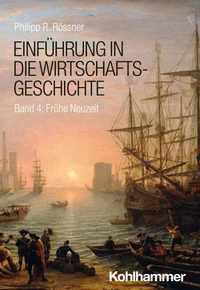Einführung in die Wirtschaftsgeschichte. Band 3: Mittelalter
Par :Formats :
Disponible dans votre compte client Decitre ou Furet du Nord dès validation de votre commande. Le format PDF est :
- Compatible avec une lecture sur My Vivlio (smartphone, tablette, ordinateur)
- Compatible avec une lecture sur liseuses Vivlio
- Pour les liseuses autres que Vivlio, vous devez utiliser le logiciel Adobe Digital Edition. Non compatible avec la lecture sur les liseuses Kindle, Remarkable et Sony
 , qui est-ce ?
, qui est-ce ?Notre partenaire de plateforme de lecture numérique où vous retrouverez l'ensemble de vos ebooks gratuitement
Pour en savoir plus sur nos ebooks, consultez notre aide en ligne ici
- Nombre de pages292
- FormatPDF
- ISBN978-3-17-036717-3
- EAN9783170367173
- Date de parution24/02/2021
- Protection num.Digital Watermarking
- Taille18 Mo
- Infos supplémentairespdf
- ÉditeurKohlhammer
Résumé
Many economic developments in Europe date back to the Middle Ages & for example, the emergence of the banking and insurance systems, and cashless payments. Issues of economic history, however, are usually given little space in introductions to medieval history. This third volume of a series of introductions to economic history, spanning several time periods, closes this gap. Sebastian Steinbach not only provides a concise overview of the economics of the Middle Ages in Europe, but also discusses research issues such as the commercial revolution, publishing, and the agricultural depression of the late Middle Ages.
Lively and informative, it refutes the idea that the Middle Ages represented a period of economic stagnation. With interpretations of many different sources, Steinbach also indicates the way in which insights into economic history are obtained.
Lively and informative, it refutes the idea that the Middle Ages represented a period of economic stagnation. With interpretations of many different sources, Steinbach also indicates the way in which insights into economic history are obtained.
Many economic developments in Europe date back to the Middle Ages & for example, the emergence of the banking and insurance systems, and cashless payments. Issues of economic history, however, are usually given little space in introductions to medieval history. This third volume of a series of introductions to economic history, spanning several time periods, closes this gap. Sebastian Steinbach not only provides a concise overview of the economics of the Middle Ages in Europe, but also discusses research issues such as the commercial revolution, publishing, and the agricultural depression of the late Middle Ages.
Lively and informative, it refutes the idea that the Middle Ages represented a period of economic stagnation. With interpretations of many different sources, Steinbach also indicates the way in which insights into economic history are obtained.
Lively and informative, it refutes the idea that the Middle Ages represented a period of economic stagnation. With interpretations of many different sources, Steinbach also indicates the way in which insights into economic history are obtained.



